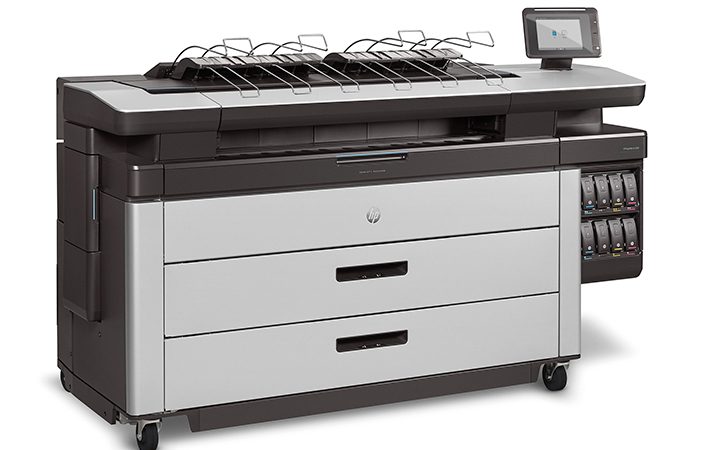Business is all about profit and getting the most out of your investments. In the graphics industry we look to maximise margins on every job and project, both as print producer and print buyer. But for too long printers have sacrificed margins just to keep the business ticking over, as buyers move more projects onto digital media because they think it’s cheaper.
When it comes to returns, that lesson is being learned. Users are turning back to print, particularly digital print produced on demand. And much more is possible, as digital media and mobile activities expand. The probabilities of success are higher for printing technologies and service providers that can add a digital dimension to projects. They can take us into uncharted territory, into wild format work that’s unique, highly creative and engaging.
Taking share
This is in part why wide format digital printing is the great success story of recent years. It’s been stealing share from traditional screen printing, creating countless new applications for print and attracting new customers. Wide format digital printing technology produces affordable work on demand and suits all sorts of applications from wallpaper to packaging, plus the finishing and creative cutting to complete the project. Mobile applications make direct digital output incredibly convenient and easy to use, especially for consumers and one-off projects. Such applications are generally high value products, such as photobooks and signage. People order print from wherever they like and by whatever means, and they are prepared to pay a premium to get what they want on demand. The margin conversation is becoming relevant again.
Jobs produced in short runs on a wide format digital printer are inevitably high margin work. But how do you capture that business consistently, how do you get those margins? The answer is complicated. It’s in the prepress, the output technology, the web and your customers. Higher margins come from effectively implementing the technology, from fully exploiting hardware, software and mobile technologies. That much is obvious, but less obvious is how to do it.
Technology and margins
Margins are of course the biggest concern for any print service provider, because they determine profits. If margins get squeezed, so do profits. Understanding how to get the most out of digital printing technology can protect and enhance margins and profits. There are many tools out there to help printers and their customers to improve production efficiency and quality. But it’s spotty. To improve large format digital printing margins, technology must be effectively implemented throughout the supply chain from origination to cutting and finishing. This is hard because today’s print media supply chains are so complex. But this is what successful PSPs do.
Knowledge in the supply chain
Today’s media landscape is totally fragmented, so it’s hard for end users to know how to get the most out of their media options or even what they are. Achieving high quality in print is especially tough, because it depends on know-how to produce decent results. Fortunately the market has that know-how, even if it doesn’t take full advantage of it. For instance, effective data control is fundamental to high quality and high margins, whatever technology produces the print. ISO standards provide guidance for all aspects of print media, from flexo to softproofing. Inkjet digital printing systems can print on virtually any surface, from three dimensional objects and wood, to silk. The problem is that all these possibilities add more complications and require thinking about to fully exploit. The good news is that today’s market has masses of scope for high value work. But customers need help from their PSPs to get with the programme. For instance they need to understand how to create print ready PDFs, or what regulations to follow for printed interior projects. The possibilities become more probable realities if the basics are in place, and if customers are confident in their PSPs’ ability to deliver.
Wild Format articles
Turning ambitious ideas into printed reality depends on proactive and clever PSPs. Customers want knowledgeable project partners to help them get the most out of their ideas and creativity. Successful print service providers take the chance to push customers’ ideas for compelling print projects even further. It’s a partnership based on shared knowledge, so over the next few months we will be covering several implementation topics for printers and print buyers. The idea is to help everyone get more out of wide format digital printing technologies. We’ll be explaining in simple terms how to improve output quality and how to maximise returns on investment, whether it’s in kit or in print media products. We will look at all aspects of wide format digital printing, from creating special effects and creative cutting, through to implementing ISO standards for higher quality and lower costs.
Success is all about getting the most out of what you put in. But it’s not the effort that matters, it’s the results and only the results. The Wild Format series helps printers and print buyers to get the best possible returns on their investments and production efforts. That’s what’s at the heart of successful high margin print jobs. And that’s what’s at the heart of wild format digital printing, both for printers and print buyers.
The Wild Format guides are intended to expand awareness and understanding of the craziness that can be created on wide format digital printing devices, from floors to lampshades and everything in between.
These guides are made possible by a group of manufacturers working together with Digital Dots.
This article is supported by Efi, Fujifilm, HP and Digital Dots.
Together we hope you enjoy the articles and that you put into practice what you learn. If you want to talk about it, go to our LinkedIn group.
Enjoy and Go Wild!





